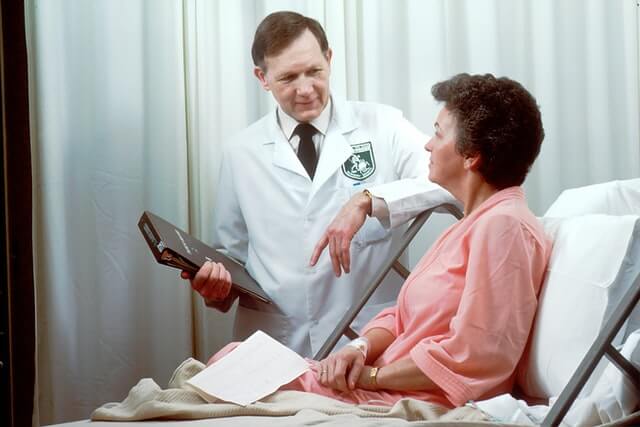According to a recent report from the journal BMJ Quality & Safety, around 12 million people from the United States get medically misdiagnosed each year.
Researchers estimate that almost half of those diagnostic errors may be “potentially harmful.”
An Infrequently Mentioned Issue
The Society to Improve Diagnosis in Medicine (SIDM) reports that around 40,000 to 80,000 individuals die every year from complications due to these misdiagnoses.
Despite those alarming numbers, it still remains an infrequently mentioned issue in the healthcare field. This matter, however, encompasses many aspects in the field, from physicians, to healthcare systems, and ultimately, to patients whose lives could be at risk if affected by an inaccurate diagnosis.
Not to mention, it is also quite a complex issue to tackle, as it would involve addressing long-standing problems already embedded in the healthcare system.
This issue bears a striking similarity to what happened at the onset of the opioid epidemic, where doctors overly prescribed opioids even for illnesses or conditions which do not really call for its use. Partly, it’s because of the manufacturer’s aggressive marketing of the product, and partly because of the alleged kickbacks that doctors and other providers receive when they prescribe the drug.
Decades have already passed and the opioid epidemic is still at large in the U.S. Only now, people who fell victim to the ongoing epidemic are filing an Opioid Epidemic lawsuit to seek compensation for the surgery, accidents, neuropathies, and many other side effects they have suffered from taking opioids.
Aside from discussions about human errors and traditional procedures that are used to treat and diagnose conditions, talking about the issue would also involve encouraging health care providers to adapt to the latest technologies and innovations that are quickly changing in the field of healthcare.
An Approach to the Issue
In 2014, SIDM launched Diagnosis, the organization’s peer-reviewed journal that houses articles and research about approaches to help prevent errors in medical diagnoses.
The following year, the organization called for the National Academy of Medicine (NAM) to look after a report of medical misdiagnosis, which led to the creation of the consensus study report ‘Improving Diagnosis in Health Care,’ which highlighted goals for the medical community, such as:
- Ensuring that health information technology is being effectively utilized
- Continuing improvement of medical education in terms of making diagnoses
- An open communication between medical professionals, patients, and their families
- Forming a liability and reporting system
- Developing a medical culture that encourages improvements on the way doctors make diagnoses
- More funding to look further into the diagnostic process through research
No Excuses
The report was of great importance in the medical field, as it provided a framework for how the system can further be improved, said SIDM CEO Paul Epner.
“We certainly don’t want to undermine the patient’s confidence in their healthcare provider; research suggests they’re getting it right 90 percent of the time,” Epner told Healthline.
“But, if you’re a pilot, for instance, talking about landing safely only 90 percent of the time isn’t great.”
Epner added that people should be made aware that the medical system isn’t flawless. Just like any other services, it is hugely dependent on human achievements and human mistakes.
That fact, however, is not an excuse to not call for a much needed change.
One area Epner pointed out is how medical students were taught in school, how it is more on rote or basically identifying patterns.
In the actual medical setting, however, decisions can go beyond just recognizing patterns. Biases could appear and affect reasoning, Epner added.
Dr. David Newman-Toker, the director of the Armstrong Institute Center for Diagnostic Excellence at Johns Hopkins Medicine, agreed with Epner in saying that this issue hasn’t been discussed enough in the medical field.
He added that the study reports by NAM and SIDM did an amazing job on bringing the conversation to the national stage, but complex issues that consist of many variables tend to elicit responses like, “it’s too difficult,” or “we can’t do anything about it.”
Another problem that Epner noticed is that most hospitals do not take any measures to keep track of diagnostic errors.
And in rare cases when they are detected, they are being dealt with in the wrong way.
For example, Epner said, when a diagnostic error is due to a mistake in a doctor’s judgment, the case will most likely go to a “peer review” instead of being treated as a “systemic problem.”
What Should Patients Do?
Newman-Toker suggests that patients take up a role in self-reporting to doctors and medical facilities.
Opting for a second opinion might also be an alternative, but coming prepared with questions might prove to be better.
He added that since doctors have limited time to spend with their patients, and more often, they are distracted with other workloads, the patients should prepare specific questions in advance.
In that case, Newman-Toker stressed, “If the doctor either blows you off — in which case definitely get a new one — or can’t give you a compelling answer to those questions or gets upset at you for asking those questions, stay vigilant.”





